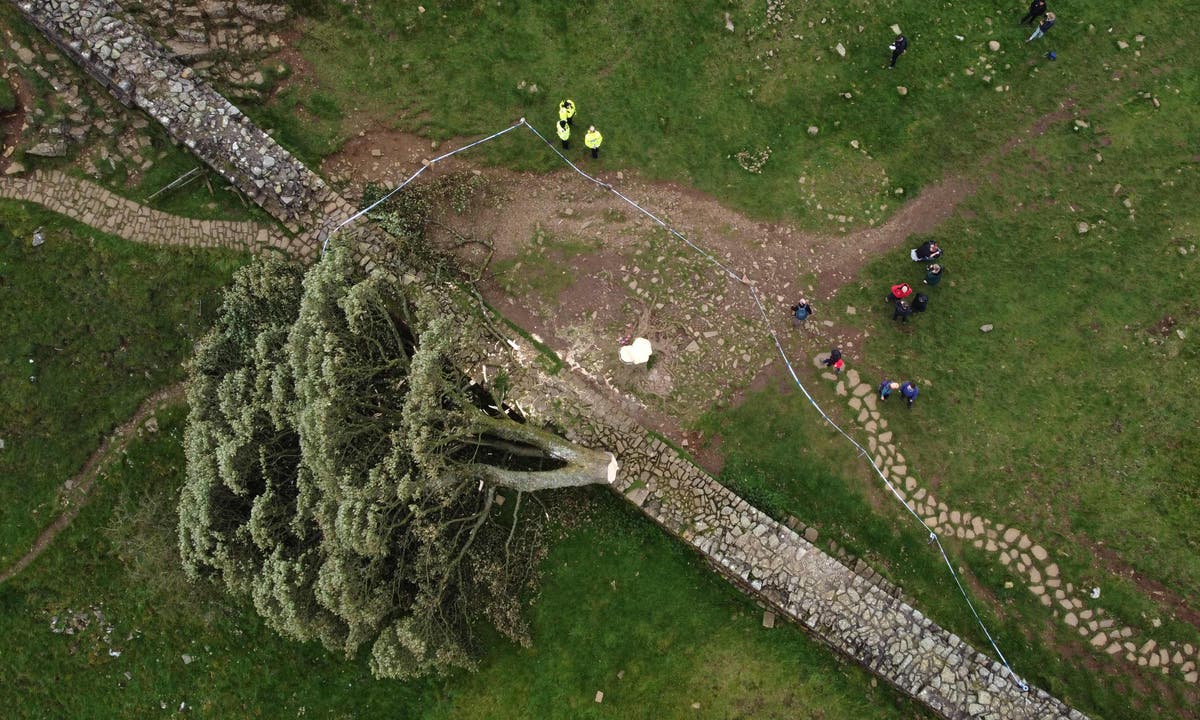Shoots have emerged from the salvaged seeds and twigs of the Sycamore Gap, sparking optimism for the potential regeneration of the beloved tree following its ruthless felling by a chainsaw.
Swift action was taken to collect the young cuttings that were scattered on the ground in the aftermath of the tree’s demise. These cuttings were swiftly transported to a highly secure greenhouse in Devon, where genetic replicas of the UK’s most renowned flora are safeguarded.
Currently, within the undisclosed confines of a laboratory, new growth is evident as tiny shoots sprout forth. The facility houses nine grafted plants and 50 seedling clones, serving as a contingency plan should the original stump fail to rejuvenate naturally.
The felling of the tree in September prompted an outcry, with the Northumberland National Park receiving an overwhelming 2,000 heartfelt messages of lamentation from individuals across the country. Presently, two individuals are under investigation.
Despite the tree stump remaining in its original location, efforts are being made to facilitate its regrowth. A modest barrier surrounds the stump to provide optimal conditions for potential regrowth.
In a bid to create duplicate backups, horticulturalist Rachel Ryver carefully gathered young twigs with buds from the fallen tree, essential for the process of grafting genetic replicas.
The laboratory also houses genetic duplicates of significant trees such as Sir Isaac Newton’s apple tree, renowned for inspiring his groundbreaking theories on gravity, and an ancient yew tree that bore witness to the tumultuous relationship between King Henry VIII and Anne Boleyn.
Juliet Stubbington is currently engaged in the ancient art of grafting, a technique that involves binding fresh roots with living twigs containing buds of the same species. The objective is to merge these components to form a robust, unified young tree.
“It’s essentially the same tree,” she affirmed. “Assisting in their revival is truly rewarding. Each of these trees has a unique narrative.”
It will be a waiting game of three years before experts can determine the viability of the stump in producing a new tree.
Tony Gates, the Chief Executive Officer of the Northumberland National Park Authority, expressed profound appreciation for the public’s emotional attachment to the Sycamore Gap tree. He emphasized the commitment to preserving its legacy with sensitivity and care.
The endeavor is driven by a desire to uphold the essence of the Sycamore Gap, fostering opportunities for people to engage with the tree and fostering a lasting legacy for both humanity and the environment.
